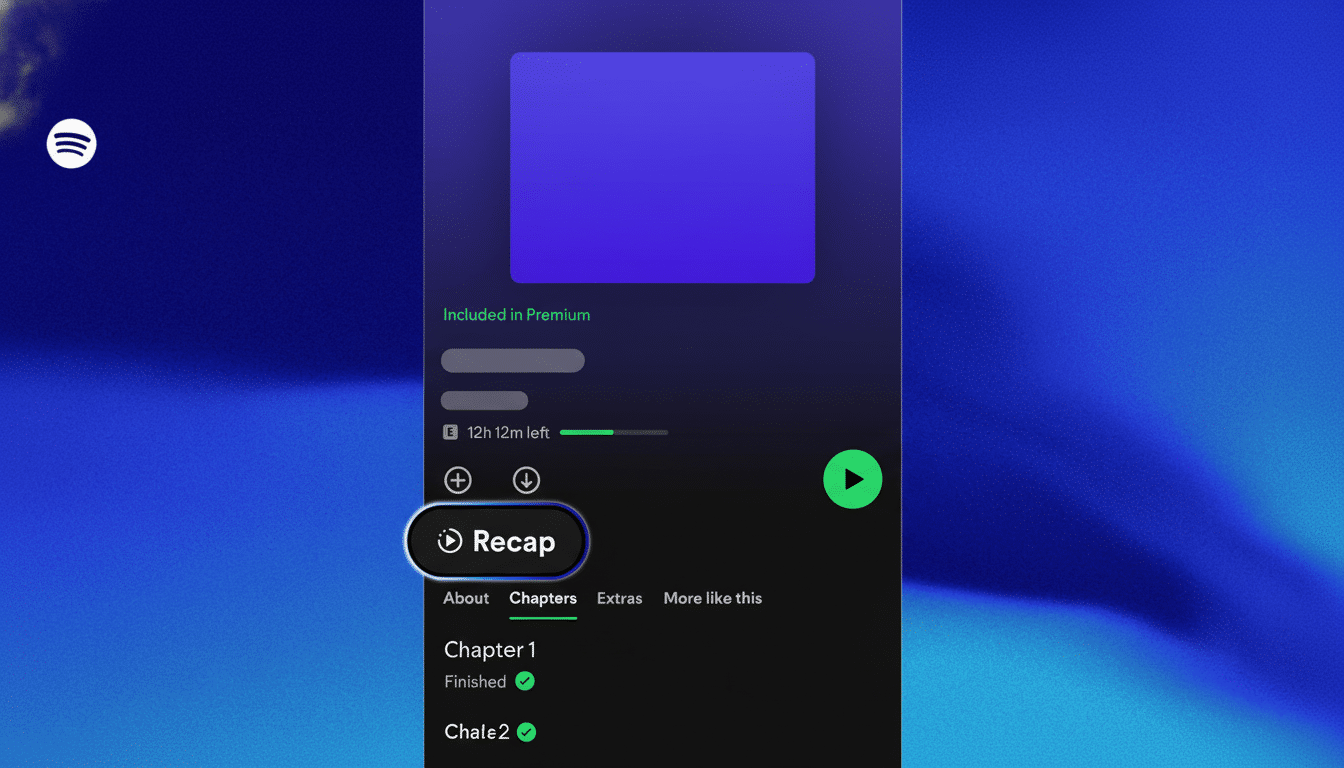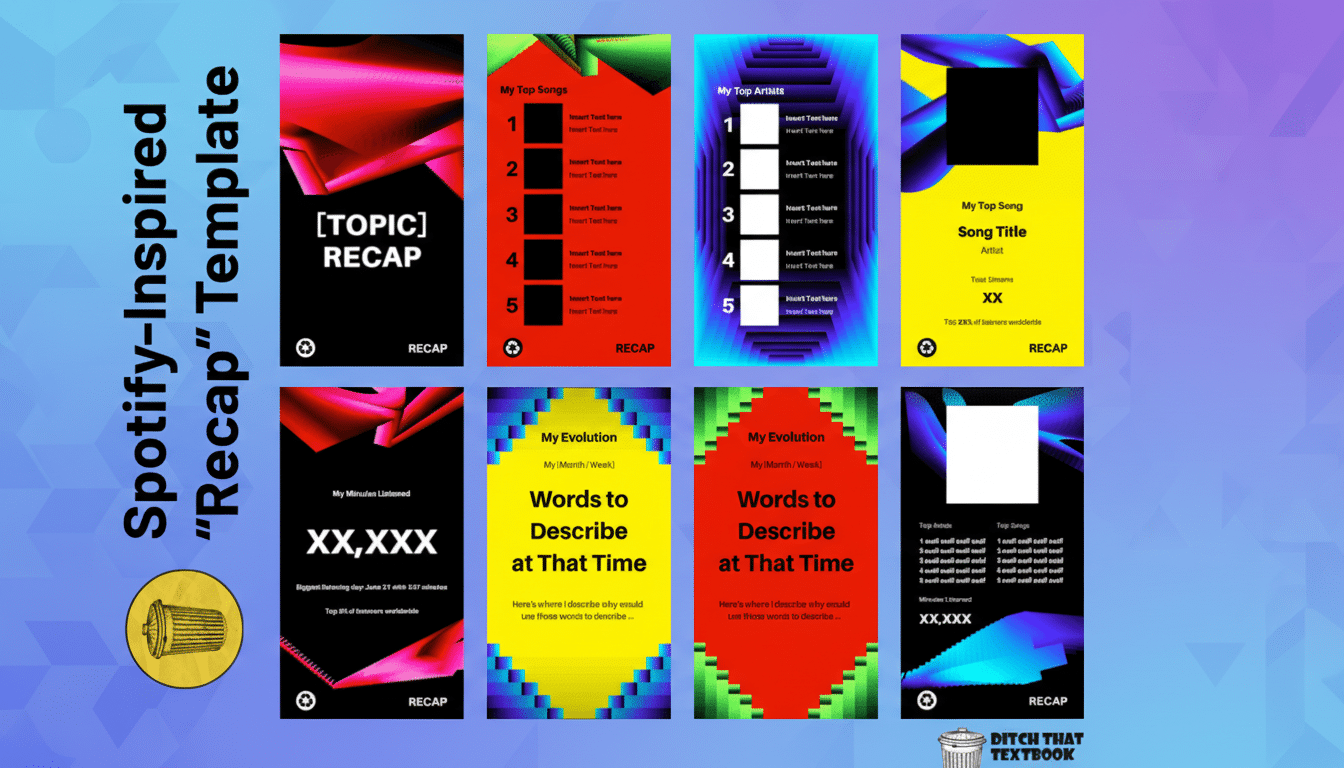Spotify is testing a kind of smart bookmark for people who listen to audiobooks, debuting the feature Recaps on iOS to help you return to a story without having to rewind.
The AI-enabled feature produces short, spoiler-free summaries of what you’ve already heard: the start of an attempt to solve one of the format’s quietest frustrations — forgetting where exactly you left off after days away.

What Recaps do and how they work on Spotify
About 15 to 20 minutes into listening to a compatible title, users can see the Recap button at the top of the audiobook page.
Tap it and Spotify will deliver a brief audio refresher on previous events, meant to bring listeners up to speed on plot points and character arcs without sampling future chapters. As you advance, the Recap moves with you to show where in the book you are without crossing the line and revealing what lies ahead.
Spotify says its AI engagement is bounded: The system in question summarizes content you have played but does not train large-scale models on audiobook collections or generate narrator voices. In essence, this is assistive metadata, not generative performance. It’s a distinction that matters to publishers and narrators who are increasingly speaking out about how their work is used within AI pipelines.
Why memory support is important for audiobooks
Listeners seldom gulp long books in a single session. Commuting, multitasking, and fragmented schedules have meant chapters dragged out over days or weeks. Cognitive science has a term for what ensues: the forgetting curve. More than a century of research, from Hermann Ebbinghaus to state-of-the-art memory studies cited by the American Psychological Association, demonstrates that recall plummets without cues or retrieval practice. A tight recap serves as a cue, helping us to rebuild our mental map of a narrative before we are submerged in it again.
It is a feature that arrives to meet the medium where it lives. Audiobook listening has been growing for years, and a larger proportion of the population is sampling books while doing other things, according to the Audio Publishers Association and Edison Research. Among users ages 12 and up, more than half have tried audiobooks, according to surveys, illustrating both the opportunity and the challenge inherent in maintaining complex stories’ coherence over fragmented days.

With streaming DNA, a familiar concept for audio
Recaps follow a larger trend of context catch-up tools in long-form media. E-readers like Kindle provide a “Story So Far” jumping-off point when you return to a book after taking time away, and prestige TV has trained audiences to expect their dramatic hour of television to begin with “Previously on ….” Extending that logic to audiobooks within a streaming app is an obvious next step, particularly as platforms vie to make switching from music and podcasts to books feel smooth.
Think of the obvious applications. If you’re stopping a mystery novel for a week, either halfway through or on page 342, then briskly read over your list of suspects and pieces of evidence before resuming with new chapters. When you hop back and forth between a business title and a sci-fi epic, Recaps minimize friction and cognitive load: You can reengage right away without scrubbing backward or scanning chapter lists.
Availability and early limits for Spotify Recaps
For the time being, Recaps are in beta on iOS, and available for only a handful of English-language audiobooks. Publishers have discretion over whether to participate, so don’t be surprised if certain titles do not display the Recap button. The company presents it as a testing-the-waters exercise to measure listener behavior and publisher acceptance before a broader deployment. Should adoption spread, look for further language support and deeper integration with bookmarks or notes.
Also worth mentioning is the fact that Recaps only trigger after a user has listened for a set number of minutes, helping to mitigate spoilers and promoting organic chapter-to-chapter usage. That threshold is a kind of implicit editorial judgment: summaries should be frequent enough that they are useful, but not so granular that they break up flow.
What it means for listeners and publishers
It’s an easy value proposition for listeners — less rewinding, more momentum in their reading. For publishers and authors, the upside is engagement. Make it easier to move backward to a dense history or character-heavy novel, and completion rates and in-the-moment satisfaction scores might also rise, which often portend future purchases or recommendations in streaming ecosystems.
The move also shows how audiobook platforms are differentiating not just on catalog, but also utility. And as the market matures, small quality-of-life features like these can punch above their weight. Recaps certainly won’t redefine the audiobook, but they take on a real pain point with a clean, user-focused design. If it’s done right, and if Spotify invests in expanding it thoughtfully, the feature could be one of those things that listeners don’t talk much about but start to depend on quietly — and miss when it’s gone.

